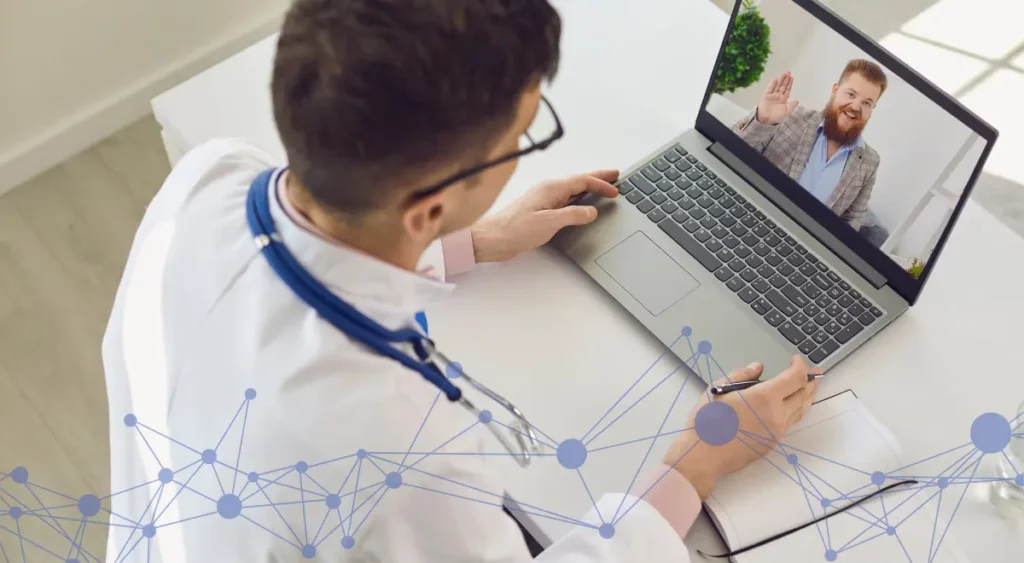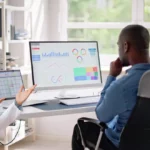How Can “One Big Beautiful Bill” Boost RPM Programs by $50B?

The “One Big Beautiful Bill,” signed July 4, 2025, directs $50B over five years to transform rural healthcare—the largest federal digital health investment since the pandemic. It opens major opportunities for Remote Patient Monitoring (RPM) expansion, infrastructure upgrades, and sustainable reimbursement. But challenges remain, from Medicaid cuts to the Sept 30, 2025 telehealth waiver cliff. This blog unpacks what the bill means for RPM growth, funding, and provider readiness through 2030.
Table of Contents
ToggleStrategy Roadmap: Navigating H.R.1 for Telehealth and RPM
- Understand the Federal Investment and Priorities
-
- Recognize that rural healthcare is the primary beneficiary, with $50 billion allocated over five years.
- Note that RPM technology is explicitly highlighted, signaling strong incentives for adoption.
- Evaluate how your organization can align services with these priorities to maximize funding opportunities.
- Assess Policy Changes Impacting Telehealth
-
- Identify new reimbursement structures, including any modifications to CPT/HCPCS codes for RPM and telehealth services.
- Stay informed on licensing, cross-state care, and telehealth coverage adjustments.
- Review compliance requirements to ensure your telehealth operations meet federal guidelines.
- Conduct Infrastructure and Readiness Evaluation
-
- Audit current digital health infrastructure: connectivity, devices, and software integration.
- Assess staff readiness and identify training gaps in RPM deployment.
- Ensure your EHR systems can integrate seamlessly with RPM platforms for patient monitoring and analytics.
- Forge Strategic Partnerships
-
- Collaborate with RPM platform providers, telehealth vendors, and local health organizations.
- Leverage partnerships to access analytics, patient engagement tools, and technical expertise.
- Consider alliances with state health agencies to align with local funding allocations.
- Implement Patient-Centric RPM Programs
-
- Prioritize devices and programs that accommodate diverse patient populations, including those with limited digital literacy.
- Develop protocols for remote monitoring, alerts, and clinician workflows to ensure actionable outcomes.
- Focus on patient engagement strategies to increase adherence and satisfaction.
- Monitor Outcomes and Report Insights
-
- Use analytics-rich dashboards to track program success and patient outcomes.
- Document ROI, patient engagement metrics, and clinical improvements to justify continued funding.
- Be prepared to adapt quickly as new policies or funding opportunities emerge.
- Plan for Long-Term Sustainability
-
- Integrate RPM and telehealth into standard clinical workflows.
- Explore revenue models beyond initial funding, including value-based care and preventive programs.
- Maintain flexibility to scale programs as state or federal regulations evolve.
Policy Landscape: Two Directions, A Tale of Two Directions
The One Big Beautiful Bill, signed into law on July 4, 2025, presents what industry experts call a “telehealth paradox.” On one hand, it creates unprecedented funding opportunities through the Rural Health Transformation Program. On the one hand, it preconditions serious problems associated with coverage that can concern millions of patients.
The Good News: Historic Rural Health Investment
The Rural Health Transformation Program represents the most substantial federal commitment to rural healthcare technology in decades. The program devotes ten billion dollars a year through 2030 to upgrading to remote monitoring, robotics, artificial intelligence, and other advanced technologies. States must submit detailed transformation plans by December 31, 2025, outlining how they’ll use these funds to improve healthcare access and outcomes in rural communities.
Such improvement is more than a prerogative of sustenance; it is fundamental change. The legislation highlights consumer-friendly and technology-based solutions to the prevention and management of chronic diseases, and this is the area where RPM tools prove their worth to the maximum.
The Rivalry: Problems of Coverage and Access
Nevertheless, there have been serious challenges to the legislation. The Congressional Budget Office estimates that 16.9 million people could lose health coverage over the next decade due to various provisions in the bill and related policy changes. These include large Medicaid reductions, which would disproportionately affect rural residents compared to those in urban communities.
Perhaps most immediately concerning for telehealth providers is what industry advocates are calling the “telehealth cliff.” Critical pandemic-era waivers that expanded Medicare telehealth coverage are set to expire on September 30, 2025, without Congressional action. These waivers currently allow patients to receive telehealth services at home, expand the types of providers who can deliver virtual care, and enable Federally Qualified Health Centers and Rural Health Clinics to serve as distant-site providers.
The RPM Opportunity: Why It is Time to Step Up
These challenges notwithstanding, there is a distinctive opportunity to expand remote patient monitoring, especially in the rural markets, due to the combination of factors.
Lasting Commercial Coverage Continuity
One of the bill’s most significant wins for RPM providers is making the High-Deductible Health Plan (HDHP) telehealth safe harbor permanent. This provision, effective retroactively to January 1, 2025, allows HDHPs to cover telehealth and remote monitoring services before patients meet their deductibles without jeopardizing Health Savings Account eligibility.
In the case of RPM platforms, the legislation develops steady commercial insurance-based revenue streams, an essential ingredient of long-term commercial viability. Employers can now confidently design benefits packages around telehealth and RPM services without worrying about changing regulations.
State-Level Change Opportunities
Rural Health Transformation Program: A Catalyst for Remote Patient Monitoring (RPM)
The Rural Health Transformation Program creates a powerful opportunity for expanding Remote Patient Monitoring (RPM) and other digital health solutions across underserved communities. Under this program, states will receive funding through a two-tiered distribution model:
- 50% of funds are divided equally among all approved states.
- 50% of funds are allocated based on rural population size and specific facility needs.
This funding structure ensures that every participating state has the financial resources to invest in digital health infrastructure, helping rural healthcare providers modernize care delivery.
Critically, the legislation highlights that funding can be used to implement technology-based solutions that enhance care in rural hospitals, with remote patient monitoring explicitly included. This means rural providers can leverage RPM to:
- Improve chronic disease management
- Reduce hospital readmissions
- Extend access to specialists through connected care
- Support value-based care initiatives
For healthcare systems, technology partners, and RPM vendors, the program represents a rare alignment of federal healthcare funding and market demand. By prioritizing remote monitoring in rural healthcare, the Rural Health Transformation Program positions RPM as a cornerstone of the future of digital health in rural America.
Addressing Rural Healthcare’s Core Challenges
How Remote Patient Monitoring (RPM) Solves Rural Healthcare Challenges
Remote Patient Monitoring (RPM) directly addresses many of the long-standing challenges that rural healthcare providers face—challenges that the new wave of federal funding is designed to solve. Rural hospitals continue to struggle with:
- Low patient volumes that impact financial sustainability
- Workforce shortages and difficulty recruiting healthcare providers
- Geographic barriers, with patients often traveling long distances for routine or specialty care
By implementing RPM, healthcare systems can:
- Maintain continuous relationships with patients regardless of distance
- Proactively monitor and manage chronic conditions
- Intervene early to prevent costly hospitalizations and emergency department visits
For example, a patient in rural North Carolina shared that remote monitoring has helped him avoid hospitalizations—each of which would have required a one-hour drive to the nearest hospital.
Stories like this highlight why federal policymakers are prioritizing investment in RPM. Remote monitoring provides measurable improvements in patient outcomes while simultaneously reducing healthcare expenditures—making it one of the most impactful tools for transforming rural healthcare delivery.
A Strategic Way to Cross the Challenges
Despite the significant opportunities, successful implementation of RPM may encounter policy and market challenges.
Preparing for Upcoming RPM Reimbursement Changes
As the September 30 telehealth waiver expiration approaches, many providers are facing uncertainty around Medicare reimbursement for digital health services. While this creates short-term challenges, the proposed CMS 2026 Physician Fee Schedule offers encouraging updates for Remote Patient Monitoring (RPM)—including more flexible requirements and the introduction of new billing opportunities.
Healthcare systems should take a proactive approach: preparing for policy shifts while also advocating for waiver extensions that support continuity of care.
The key, however, is to design RPM programs that are sustainable and not solely dependent on temporary policy flexibilities. Long-term success comes from demonstrating clear clinical value and cost savings, including:
- Improved chronic disease management
- Reduction in avoidable hospitalizations
- Enhanced patient engagement and satisfaction
Programs that prove these outcomes create a compelling case for continued reimbursement, regardless of short-term federal policy changes. In other words, RPM initiatives built on measurable impact will withstand regulatory shifts and remain viable as a cornerstone of value-based care.
Responding to Pennsylvania Implementation Barriers
The federal investment indeed recognizes that many rural facilities face gaps in infrastructure and expertise necessary for comprehensive digital health programs. This underscores the importance of strategic alliances.
Successful RPM implementation requires a multi-faceted approach, including:
- In-clinic devices that are reliable and accessible for patients and staff alike.
- Patient engagement systems designed to accommodate diverse populations, ensuring usability and adherence.
- Analytics-driven reporting that provides actionable insights for clinicians and administrators.
- Seamless EHR integration to ensure continuity of care and streamlined workflows.
By addressing these elements through partnerships and careful planning, rural facilities can overcome operational barriers and achieve sustainable, high-quality digital health programs.
Providers in less urban areas typically need external support for selecting equipment, training staff, onboarding patients, and maintaining the program. The federal funds are designated to support technical assistance, software, and hardware investments that strengthen healthcare’s digital infrastructure. These resources can be used to improve efficiency, enhance cybersecurity capabilities, and drive better patient outcomes through advanced health IT solutions.Building Sustainable RPM Models
With potential shifts in coverage affecting certain patient populations, it is critical for Remote Patient Monitoring (RPM) programs to demonstrate value across diverse payer mixes. Sustainability depends on more than short-term reimbursement—it requires models that consistently prove both clinical effectiveness and financial impact.
Key strategies include:
- Clinical protocols designed to deliver measurable outcomes, such as reduced readmissions and improved chronic disease management
- Patient engagement programs tailored for resource-limited rural and underserved communities
- Robust data infrastructure that supports clinical decision-making, reporting for payers, and continuous program improvement
By aligning clinical outcomes, patient experience, and cost savings, healthcare organizations can build RPM programs that remain viable regardless of policy shifts—establishing remote monitoring as a cornerstone of value-based care.
What providers need are ideas of concrete business actions to take today
Healthcare systems serious about capitalizing on these opportunities should take several immediate steps:
Engage with State Planning Processes
As states work toward the December 31, 2025 deadline to finalize their Rural Health Transformation Plans, providers have a critical opportunity to influence how federal resources are allocated. Active participation in planning discussions with state health departments ensures that Remote Patient Monitoring (RPM) is recognized as a priority investment.
By engaging early in the process, healthcare organizations can help shape funding strategies that support RPM adoption, strengthen digital health infrastructure, and expand access to care for rural populations.
Key Steps to Strengthen RPM Readiness
- Review Current Capabilities
Conduct a thorough assessment of your existing remote monitoring infrastructure, staff capacity, and the patient populations most likely to engage with—and benefit from—Remote Patient Monitoring (RPM) services. - Evaluate Partnership Opportunities
Most healthcare systems lack the full expertise required for end-to-end RPM deployment. Form strategic partnerships with technology vendors and digital health leaders experienced in overcoming the unique challenges of rural healthcare markets. - Design for Multiple Scenarios
Build RPM strategies that remain effective under different policy and reimbursement environments. Focus on programs that deliver clear clinical outcomes and economic value, ensuring sustainability regardless of regulatory shifts. - Prepare to Scale
With significant federal investment driving expansion, demand for RPM is expected to grow rapidly. Choose platforms and partners that can seamlessly scale to support larger patient populations without compromising quality or data security.
The Future of Rural Healthcare Technology
The One Big Beautiful Bill marks a true inflection point for rural healthcare technology. With unprecedented federal funding, lasting improvements in commercial coverage, and mounting evidence of the clinical and financial benefits of Remote Patient Monitoring (RPM), the conditions are in place for rapid digital health expansion.
Healthcare systems that move strategically—by engaging in state planning processes, building sustainable RPM programs, and forming partnerships with experienced technology providers—will be best positioned to improve care delivery while strengthening their business models.
The window of opportunity is limited. States must present their rural health transformation plans within months, and those who act early will gain a clear competitive advantage in securing funding and expanding market reach.
For rural healthcare providers, the question is no longer if they should invest in RPM—it is how quickly they can implement programs that deliver on the promise of:
- Improved access to care
- Better patient outcomes
- Stronger, more sustainable economics
The planned $50 billion investment is more than just a financial commitment—it is a recognition that the future of rural healthcare depends on innovative, technology-driven care models. Remote Patient Monitoring is not just part of that future—it is central to it.
Ready to explore how your organization can capitalize on these rural health transformation opportunities? The RPM implementation experts at Healtharc are ready to speak with you about opportunities to strategically implement RPM solutions that align with federal funding priorities and provide long-term value to your patient populations.
Key Takeaways
- $50B federal funding (2025–2030) prioritizes rural healthcare tech.
- RPM is explicitly included as a core investment area.
- Providers face both opportunities (funding, safe harbor, state grants) and risks (coverage loss, waiver cliff, infrastructure gaps).
- Early engagement in state transformation plans (due Dec 31, 2025) is crucial.
- HealthArc helps providers design sustainable RPM programs that align with new funding models.
Frequently Asked Questions (FAQs)
It’s a federal law passed on July 4, 2025, that invests $50B in rural healthcare transformation.
The bill provides $10B annually from 2025–2030.
RPM is explicitly listed as a priority technology for federal funding.
It helps manage chronic diseases, reduces hospitalizations, and improves access in remote areas.
50% is divided equally among states, and 50% is based on rural population and facility needs.
States must submit Rural Health Transformation Plans by Dec 31, 2025.
On Sept 30, 2025, pandemic-era flexibilities (like at-home telehealth coverage) may expire.
Rural hospitals, clinics, and patients with chronic conditions benefit the most.
Yes, some provisions may reduce Medicaid enrollment, affecting ~16.9M people.
The bill makes the telehealth safe harbor for HDHPs permanent, enabling steady RPM coverage.
Coverage gaps, infrastructure limitations, compliance requirements, and staff training.
- Engage in state planning processes
- Upgrade EHR and device integration
- Train staff on new codes and workflows
- Partner with RPM technology vendors
CMS 2026 rule adds flexible RPM billing codes, making reimbursement easier alongside federal funding.
No—while rural is prioritized, commercial coverage expansions benefit urban and suburban providers too.
HealthArc offers an end-to-end RPM platform with devices, analytics, compliance tools, and billing support to align with funding.
Most Recent Blogs
Categories
Related Blog
- November 26, 2025 | Read Time: 14 mins
Return on Investment (ROI) of Remote Patient Monitoring (RPM): A Complete Guide for ACOs and Healthcare Organizations
The U.S. healthcare system continues its transition from fee-for-service models to value-based...
Learn More- November 24, 2025 | Read Time: 15 mins
Common RPM Pricing Models for Providers: A Profitability-Focused Guide
Remote Patient Monitoring (RPM) has rapidly emerged as one of the leading...
Learn More- October 23, 2025 | Read Time: 12 mins
How RPM Devices Improve Hypertension and Diabetes Outcomes in Medicare Populations
Remote patient monitoring (RPM) is transforming chronic care for Medicare beneficiaries. CMS...
Learn More


